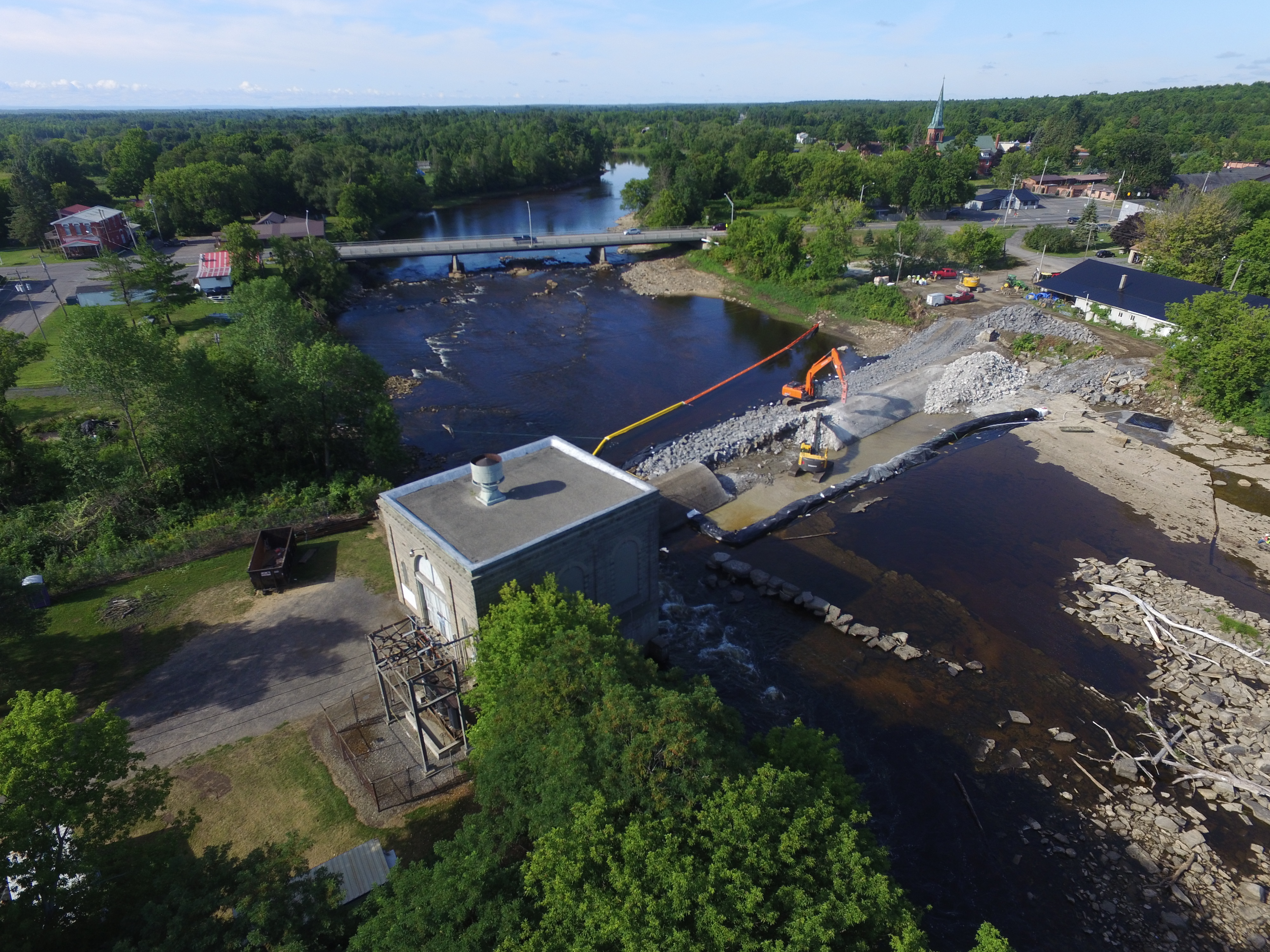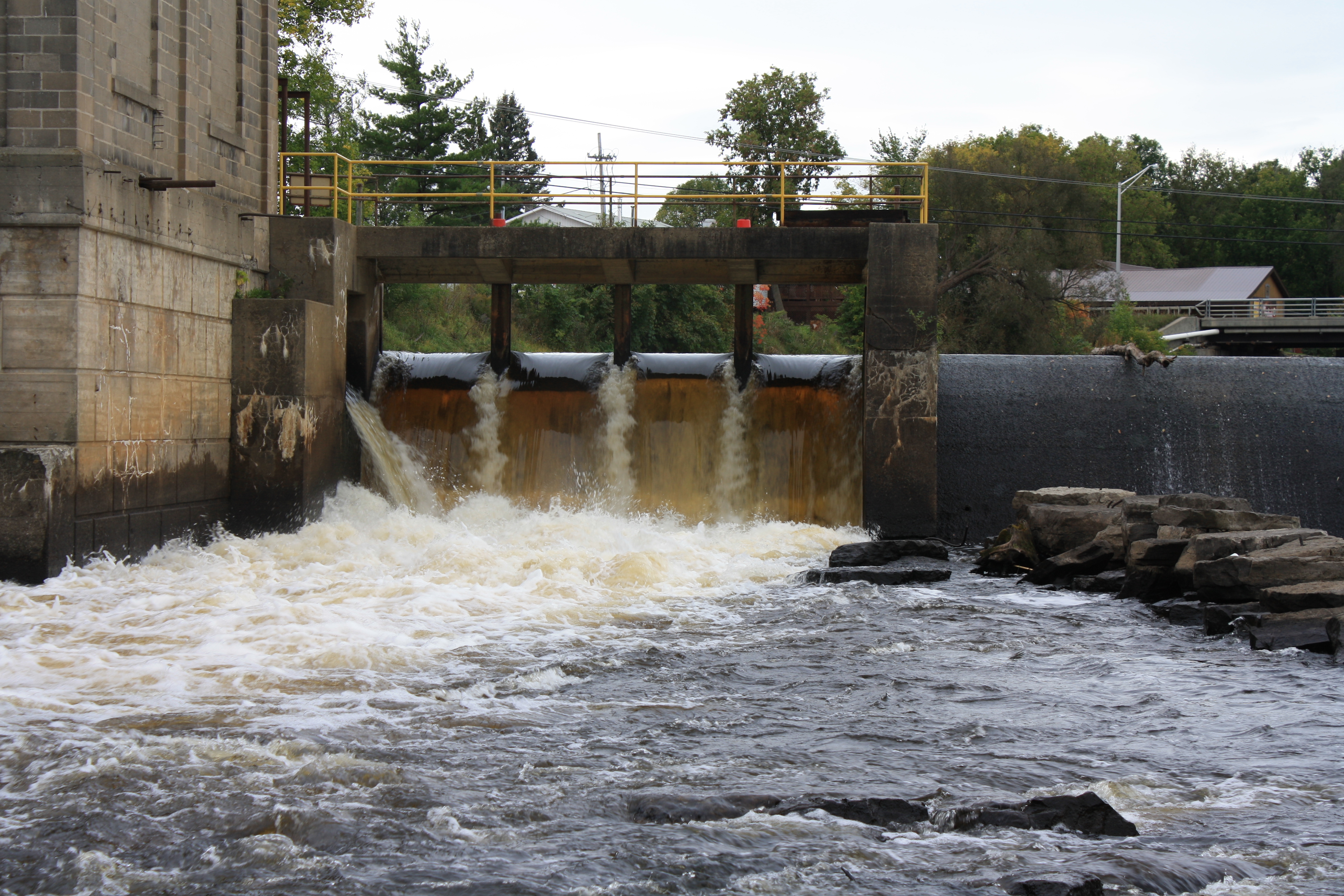
This article is published in conjunction with PBS’s “The Age of Nature” series which begins airing on Oct. 14.
Join Great Lakes Now‘s “Watch Party: Damming Decisions – A discussion about dam removals and what they mean for the environment” on Facebook on Monday, Oct. 19, at 7 p.m. EST. The author of this story along with two scientists will be participating in a Q&A where you can ask questions. Click HERE for more information.
After nearly a century of generating hydroelectric power on the St. Regis River in upstate New York, the Hogansburg Dam came down in December 2016. Fish who could now swim freely along the river weren’t the only ones celebrating. The end of the dam also marked the first time a tribal nation led the decommissioning process for a federal dam.
“There’s now a beautiful ripple and cascade in a spot where it was just a forgotten industrial site,” said Tony David, the director of the Saint Regis Mohawk Tribe’s environment division. “Now people can go there and enjoy the fish resources, they can enjoy the natural beauty of the river. It’s a source of pride for a lot of community members.”
API key not valid. Please pass a valid API key.Thanks to the removal of the dam, around 500 miles of river and stream habitat have been connected to the Great Lakes system again via the St. Lawrence River. And after four years of the river flowing freely, David and others are getting ready to do more scientific research on how the aquatic wildlife have benefitted.

Hogansburg Dam removal on the St. Regis River (Photo Credit: Saint Regis Mohawk Tribe)
The positive results of the dam removal were the end of a long and extensive process. The Saint Regis Mohawk Tribe and their state partners in the state Department of Environmental Conservation and U.S. Fish and Wildlife Service spent years doing studies to make sure removing the dam was the best option for the community and the environment.
In the end, they discovered that the Hogansburg Dam turbine had been damaged and that to renovate the dam to the necessary standards would cost millions of dollars, whereas removal would only cost around $1.5 million. Because the community is so close to a much larger dam on the St. Lawrence River, the loss of the hydroelectric energy produced by the Hogansburg Dam would be negligible. All these factors contributed to the decision to remove the dam.
“Ultimately the goal was to improve the river habitat quality and also to reconnect the downstream St. Lawrence River with the St. Regis River,” David said.
Four years on, he can say those goals have been accomplished.

Hogansburg Dam removal on the St. Regis River (Photo Credit: Saint Regis Mohawk Tribe)
Aging infrastructure across the Great Lakes region
More than 91,000 dams impede the passage of rivers all around the United States. Some of the dams were built for the purpose of generating power. Others were meant to provide water for agriculture or create lakes for recreation.
Based on a 2017 report by the American Society of Civil Engineers, many of those dams are increasingly in need of repairs. Most dams have a lifespan of about 50 years, and many that exist in the United States were built long before the 1970s—including the Edenville Dam, which failed earlier this year.
Lisa Hollingsworth-Segedy, the director of river restoration for non-profit conservation group American Rivers, says that around 75% of dams in her state of Pennsylvania are over 50 years old.
“I would not be surprised if it was about the same nationally,” Hollingsworth-Segedy said. She added that dam removal usually costs a tenth to a third of the amount that would be needed to repair dams.
American Rivers published a map in 2019 of the 1,722 dams that have been removed since 1912, noting that their removal has led to improved river health, revitalized fish and wildlife communities, and even increased recreational opportunities.
“Removing dams generally increases nonmotorized boating, hiking and fishing. It returns everything to a normal system,” Hollingsworth-Segedy said.
This seems to be reflected in certain state budgets, like that of Michigan. According to The Detroit News, nearly 80% of Michigan’s $16.95 million dam management grants have gone toward dam removal projects since 2012. Among the success stories are the dams that were removed from the Boardman River, which produces about one third of the water volume for Grand Traverse Bay. Since 2012, three dams on the river have been removed, reconnecting 160 miles of river habitat and restoring more than 250 acres of wetlands.

Hogansburg Dam removal on the St. Regis River (Photo Credit: Saint Regis Mohawk Tribe)
Advantages and disadvantages for river-dwellers
The environmental benefits of dam removal are often touted as a main reason to choose that path over repairing the dams. Environmental scientist Stephanie Januchowski-Hartley, who currently works as a research fellow at Swansea University, has studied this issue around the Great Lakes watershed.
“Many fishes are required to move upstream or downstream in order to reproduce and access food resources,” Januchowski-Hartley said. “When they do that, they also bring nutrients and food to freshwater ecosystems. Things like salmon, when they die after they spawn, that brings nutrients into the local ecosystem. When they deposit eggs, that’s food.”
And it’s not only dams that impede this movement. In 2013, Januchowski-Hartley was the lead author on a paper in Frontiers in Ecology that looked at infrastructure besides dams that can cause problems with aquatic connectivity. Road crossings are 38 times more numerous than dams across the Great Lakes basin, and only about 36% of those roads are fully passable to fish.
But both Januchowski-Hartley and Hollingsworth-Segedy note there’s another issue besides the cost of dam repair that plays into discussions of dam removals in the Great Lakes: invasive species.
Advocates of some dams have said that both sea lamprey and Asian carp are impeded by the presence of dams. Keeping those species from spreading is a high priority for fisheries managers. If dams along rivers leading into the Great Lakes are removed, will that suddenly allow freer access to the lakes for these aquatic invasives?
Januchowski-Hartley said it’s an area that deserves more research, but that there might be unexpected results from dam removal.
“If we think about it broadly, what was the river system like before the dam? Would the sea lamprey or carp persist if we were to remove dams and restore the system to more natural flows?” Januchowski-Hartley said.
In Traverse City, the Great Lakes Fishery Commission is attempting to see if it can work around that question. They’re replacing one of the Boardman River dams with FishPass. The first-of-its-kind project incorporates a variety of technologies to allow native species to travel the river while blocking invasive species like sea lamprey. The project will break ground at the end of 2020 with construction aimed to complete by 2022.
API key not valid. Please pass a valid API key.A model for future decommissioned dams
With tens of thousands of dams still operating around the country, the issue of removal or repair won’t disappear anytime soon. But the successful decommissioning of the Hogansburg Dam in New York has plenty of lessons to offer.
“These are very complicated projects and a lot of things can go wrong, so it’s important that you have studies in place so people can make informed decisions,” David said of his experience.
Recently the Saint Regis Mohawk Tribe worked with experts at Clarkson University to study ice jams on the river and whether the removal of the dam created conditions for even more ice build-up. Their research showed that the dam only reduced the ice jams when water flow was relatively low, but not when it was moderate or high.
“We have this vulnerability regardless of whether or not the dam is there, so we really need to get down to the business of producing policies for floodplain management that reinforce resilience,” David said.
David said more than 6,000 dams still exist in the state of New York. Thousands more are operating across the Great Lakes. What communities decide to do with those dams will vary from place to place, but it’s clear that the questions will need to be asked—and answered.
Read more about dams on Great Lakes Now:
Dam Investment: How does Michigan stack up against Great Lakes peers?
Michigan Dam Safety Task Force holds first virtual meeting
Midland Flooding: Climate change and rains exacerbate dam infrastructure issues
More Than Dow: Chemicals, contaminants and untreated sewage all washed out by Midland dam breaks
Michigan House OKs spending on jobless benefits, flood costs
Plants cropping up in lost Michigan lakes where dams failed
API key not valid. Please pass a valid API key.Featured image: Hogansburg Dam removal on the St. Regis River (Photo Credit: Saint Regis Mohawk Tribe)
1 Comment
-
In the case of the Boardman and Sabin Dams, the first Section 4(f) federally protected property was destroyed. The grand traverse County natural education reserve federally funded with over a 50 year history was ingnored by the process of Dam Removal, and disguised as a River Reborn for the new wastewater treatment plant that will dump treated sewage into the Boardman River where the Natural Education Reserve existed. The Reserve was Dedicated to the public in perpetuity and July 4th 1976.




